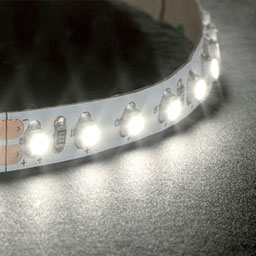Learn soft-edge recipe
Soft-edge (sometimes called edge blending) allows you to create 1 continuous screen with 2 (or more) video projectors.
To do so, you can use a computer with multiple video outputs, or an expansion car such as a Matrox DualHead/TripleHead or a Datapath X4.
The principle is simple. The 2 video projectors overlaps a bit, so they blend together :
![]()
Here is a step-by-step recipe to create a soft-edge :
- Put all your projectors with a neutral keystone to maximise the projection surface.
- Place your projectors
They might be side by side with an overlapping surface of more or less 5/10% of the global surface. Here we took 40 pixels.
What you see here is the black light of the projectors, the best their contrast will be, the less the black light will be visible.
Keep in mind that soft-edge will not remove that black light.
![]()
- Configure outputs
In Millumin open the output panel, then choose the layout of your soft-edge (horizontal or vertical).
Add as much outputs as you need (one per beamer).
- Adjust the Resolution
All the projectors must be at the same resolution.
In that example, we have two 800x600 projectors which result in a 1600x600 canvas.
Enter the resolution for one projector (800x600) in the field.
![]()
- Adjust the soft-edge
This should be approximately the number of pixels that are overlapping.
Here 40 pixels.
- Adjust the corner
Click on "Display test card", then open the corners editor.
You know it is finished when the circles are perfectly round, and the horizontal/vertical lines are perfectly parallel.
![]()
![]()
![]()
![]()
- Adjust the color
Open the color panel of the best projector (the one that have the wither image) and degrade it to have the same color on each projectors.
![]()
- Adjust the smoothness
Now, going back to dashboard, you can use that continuous screen as a normal screen.
If you see a white area in soft-edge, adjust the smoothness of the soft edge (if too high, this area will be brighter than the rest of the image).
![]()
![]()
![]()
![]()
Alternatively (and depending on your configuration), you could align the output corners first, then adjust the number of pixels overlapping.

 Millumin Help
Millumin Help














































